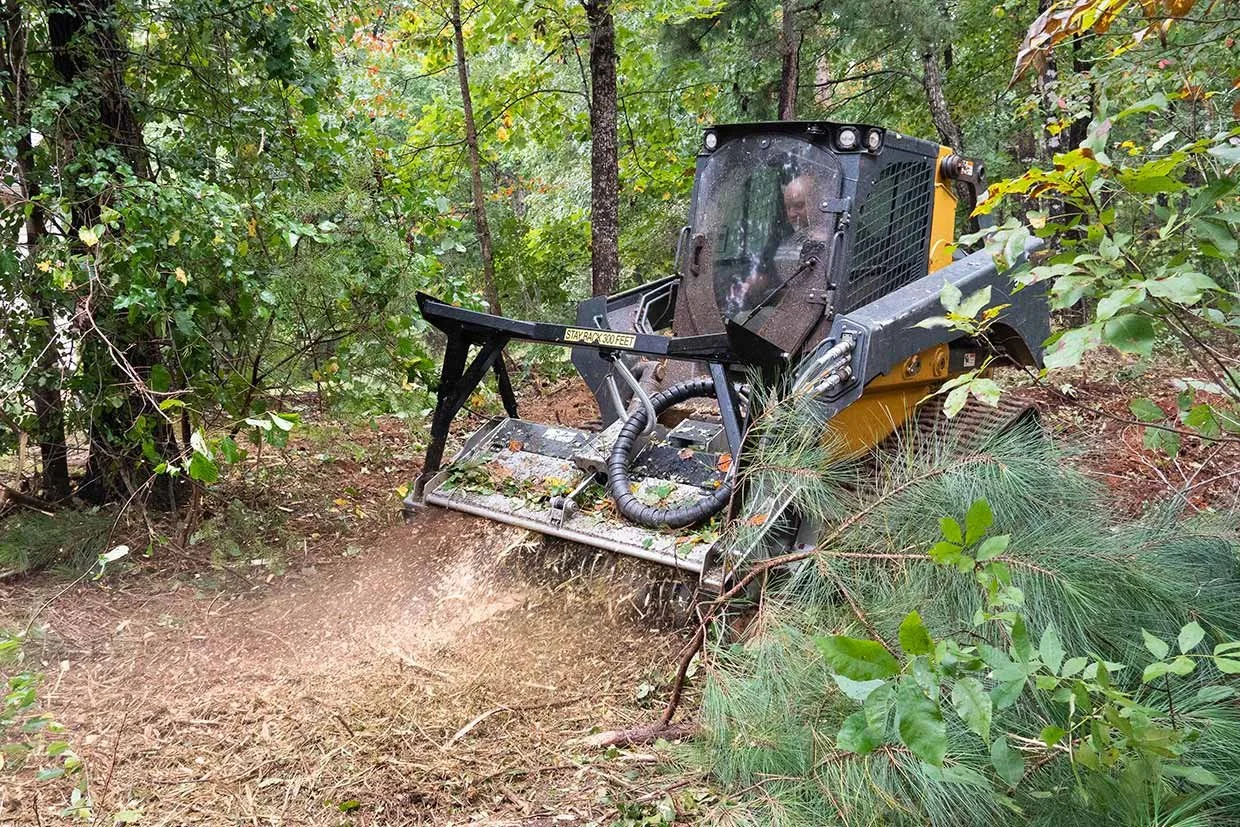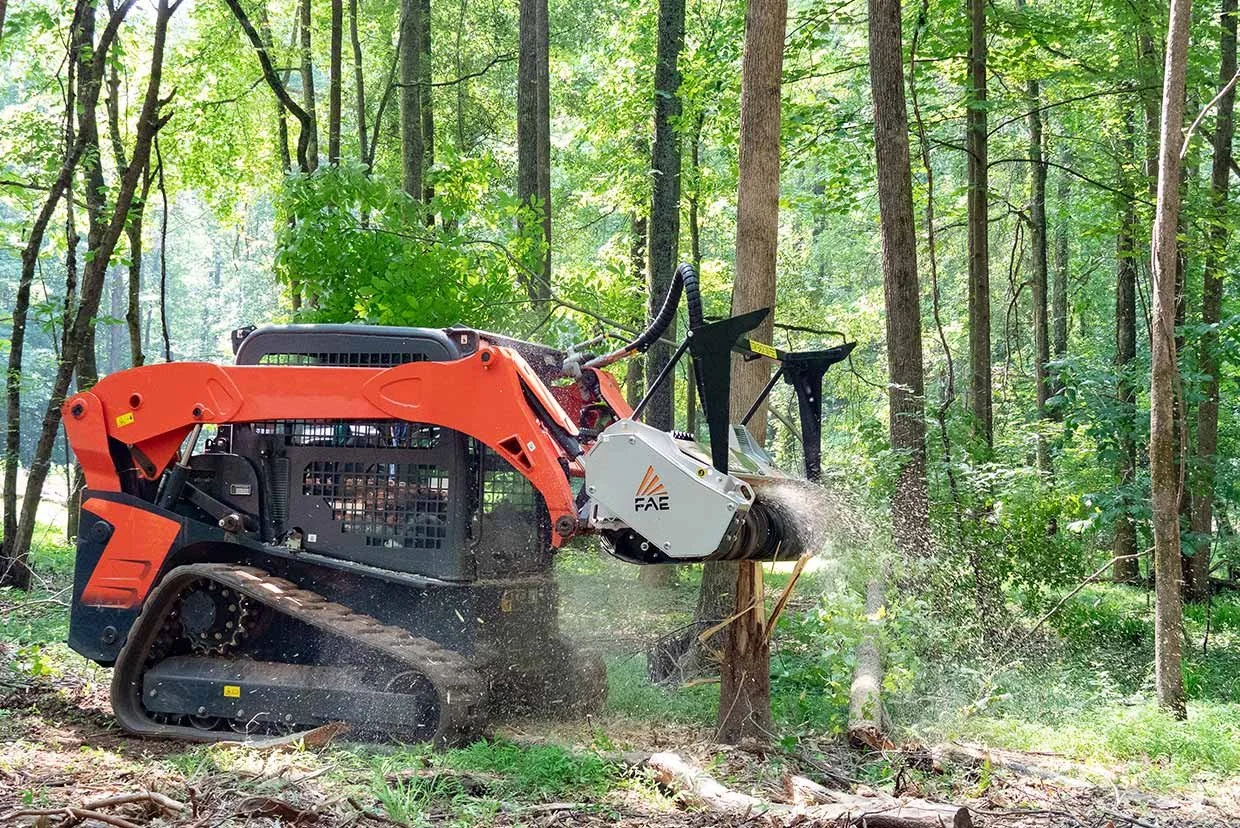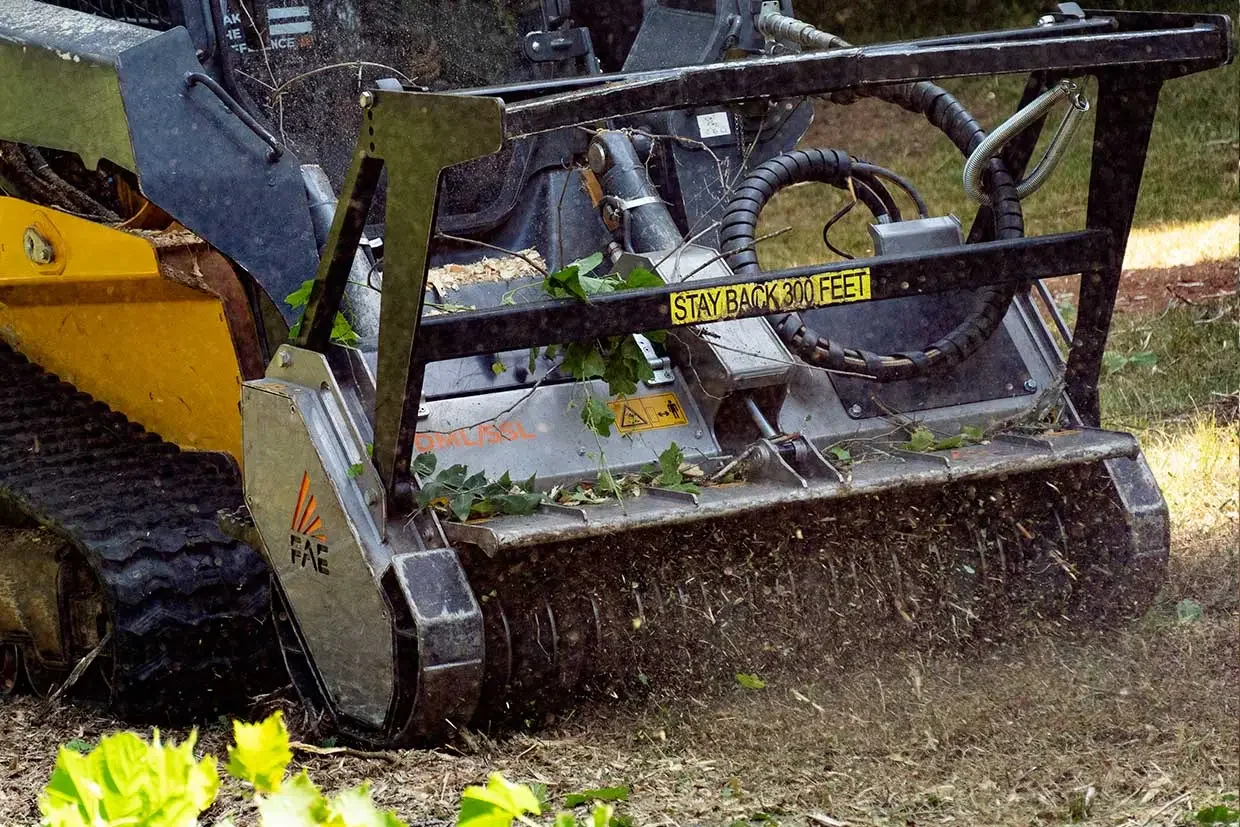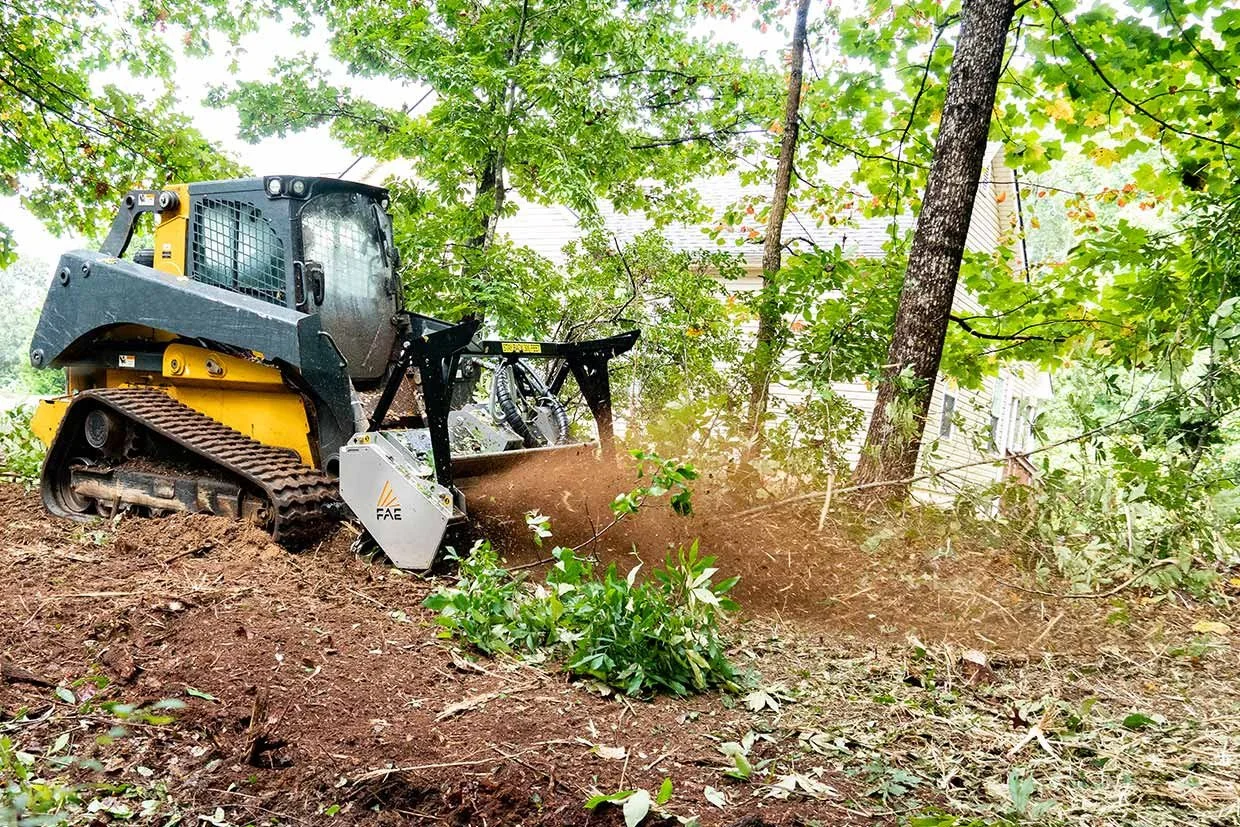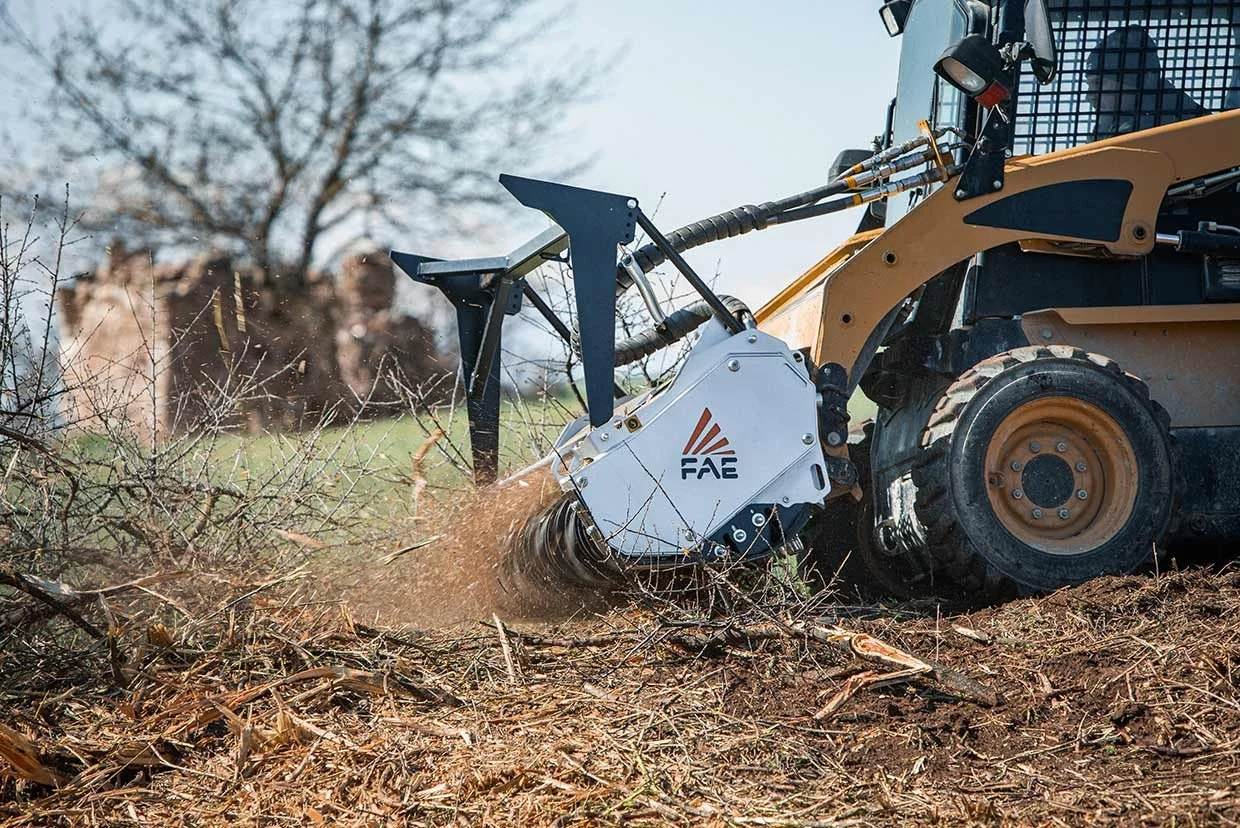FAE Mulchers: Choosing the Right Rotor for the Job
When it comes to FAE mulchers, there are two types of rotors to choose from: Bite Limiter rotors and Open Rotors. While both types of rotors are designed to provide efficient and effective mulching, they have some key differences that make one more suitable for certain applications than the other. In this article, we'll explore the differences between Bite Limiter rotors and Open Rotors, and provide guidance on which rotor to use in different scenarios.
Bite Limiter Rotors (pictured FAE BL1/SSL)
Bite Limiter rotors are designed to limit the amount of material that is processed at one time, reducing the risk of clogging and improving overall efficiency. These rotors feature a series of teeth that are spaced closely together, allowing for precise control over the mulching process. Bite Limiter rotors are ideal for:
Dense Vegetation: When working in areas with dense vegetation, Bite Limiter rotors are the way to go. They are able to process smaller amounts of material at a time, reducing the risk of clogging and improving overall efficiency.
Small Diameter Trees: Bite Limiter rotors are also ideal for mulching small diameter trees. They are able to process smaller branches and leaves with ease, providing a fine and consistent mulch.
Sensitive Areas: When working in sensitive areas, such as near waterways or in environmentally sensitive areas, Bite Limiter rotors are the way to go. They are able to provide a more precise and controlled mulching process, reducing the risk of damage to the surrounding area.
Open Rotors (pictured FAE DML/SSL)
Open Rotors, on the other hand, are designed to process larger amounts of material at one time, making them ideal for:
Open Areas: When working in open areas, such as fields or meadows, Open Rotors are the way to go. They are able to process larger amounts of material at a time, providing a faster and more efficient mulching process.
Large Diameter Trees: Open Rotors are also ideal for mulching large diameter trees. They are able to process larger branches and trunks with ease, providing a coarser and more textured mulch.
Heavy Debris: When working in areas with heavy debris, such as after a natural disaster, Open Rotors are the way to go. They are able to process larger amounts of material at a time, providing a faster and more efficient mulching process.
Scenario-Based Rotor Selection
Here are some scenarios that illustrate the difference between Bite Limiter rotors and Open Rotors:
Scenario 1: You are working in a dense forest with small-diameter trees. In this scenario, a Bite Limiter rotor would be the best choice, as it is able to process smaller amounts of material at a time and provide a fine and consistent mulch.
Scenario 2: You are working in an open field with large-diameter trees. In this scenario, an Open Rotor would be the best choice, as it is able to process larger amounts of material at a time and provide a coarser and more textured mulch.
Scenario 3: You are working in a sensitive area, such as near a waterway. In this scenario, a Bite Limiter rotor would be the best choice, as it is able to provide a more precise and controlled mulching process, reducing the risk of damage to the surrounding area.
Conclusion
In conclusion, the choice between a Bite Limiter rotor and an Open Rotor depends on the specific application and scenario. Bite Limiter rotors are ideal for dense vegetation, small diameter trees, and sensitive areas, while Open Rotors are ideal for open areas, large diameter trees, and heavy debris. By choosing the right rotor for the job, you can ensure a faster and more efficient mulching process, while also reducing the risk of damage to the surrounding area.


